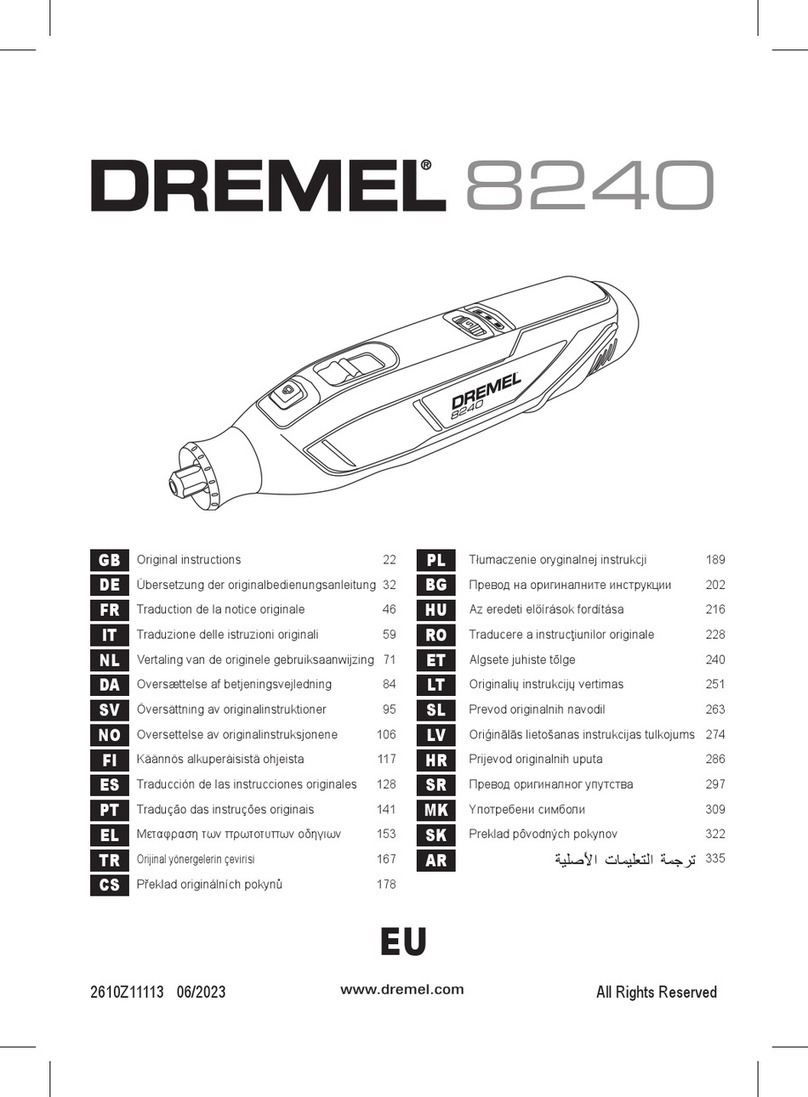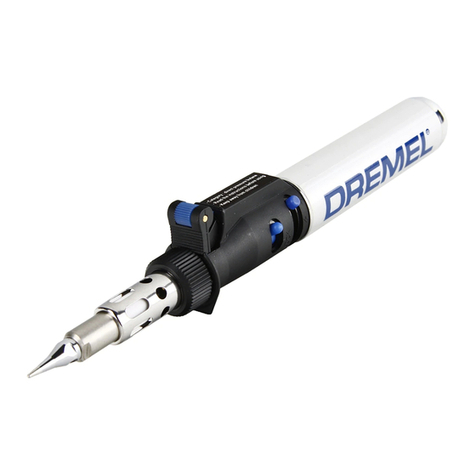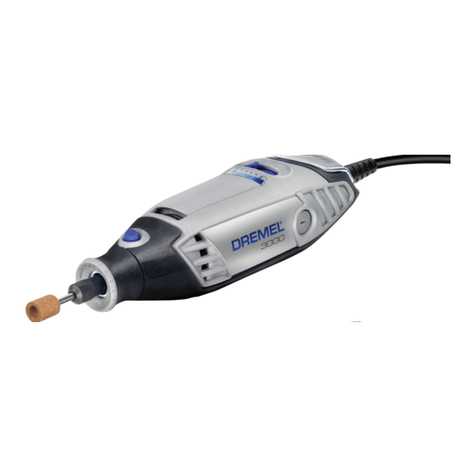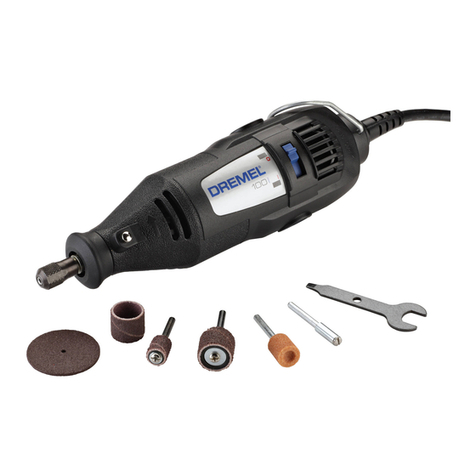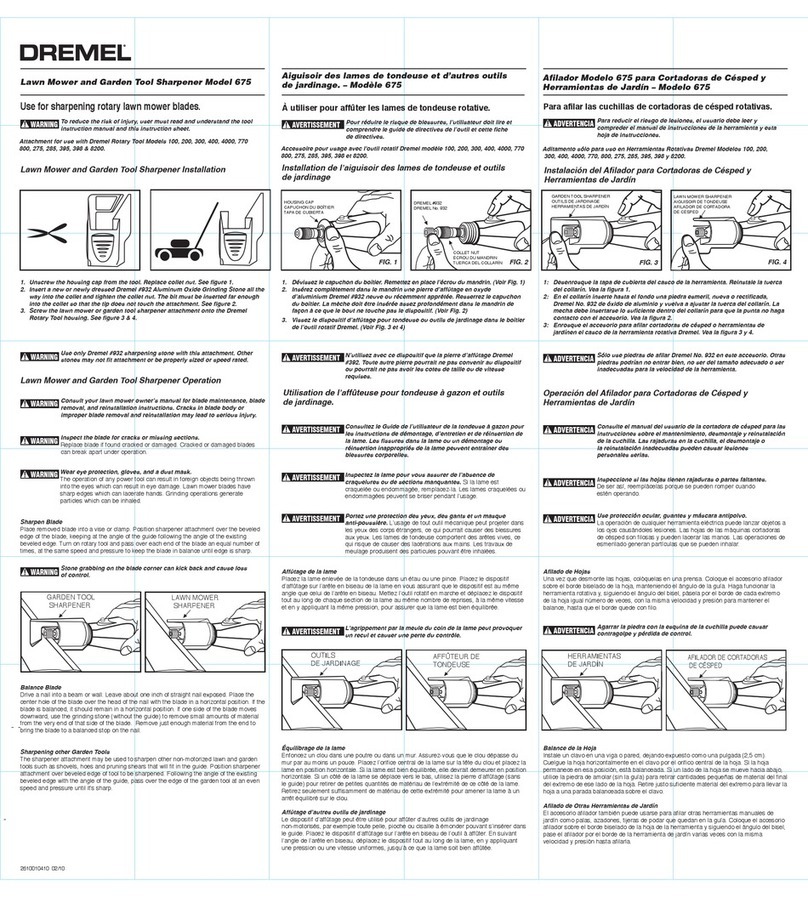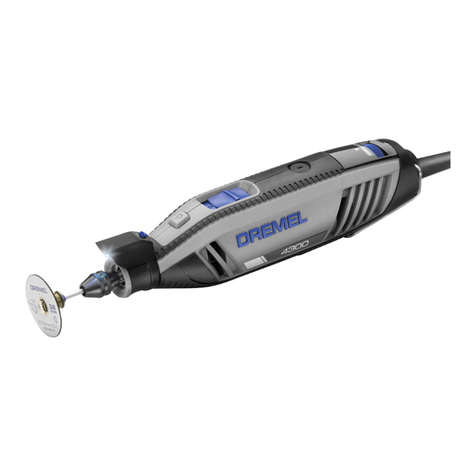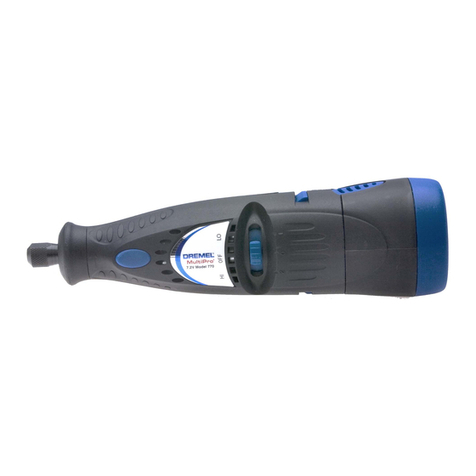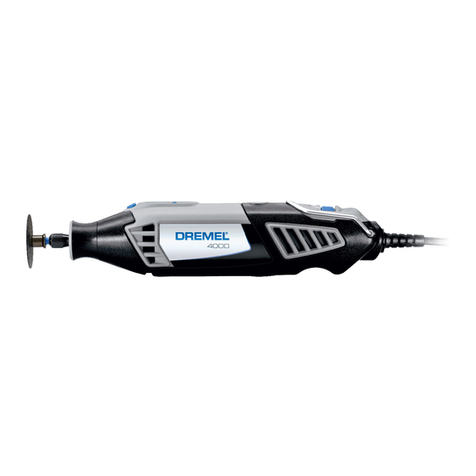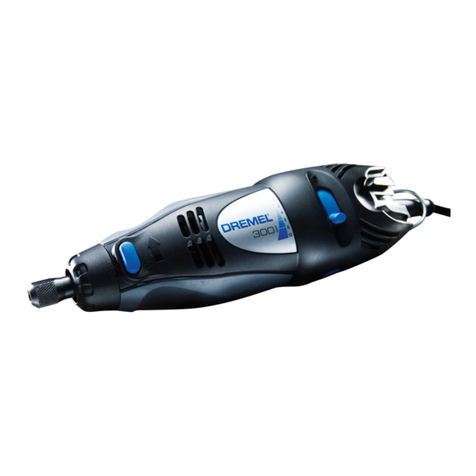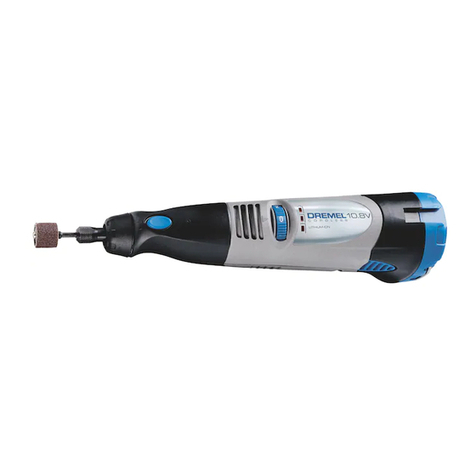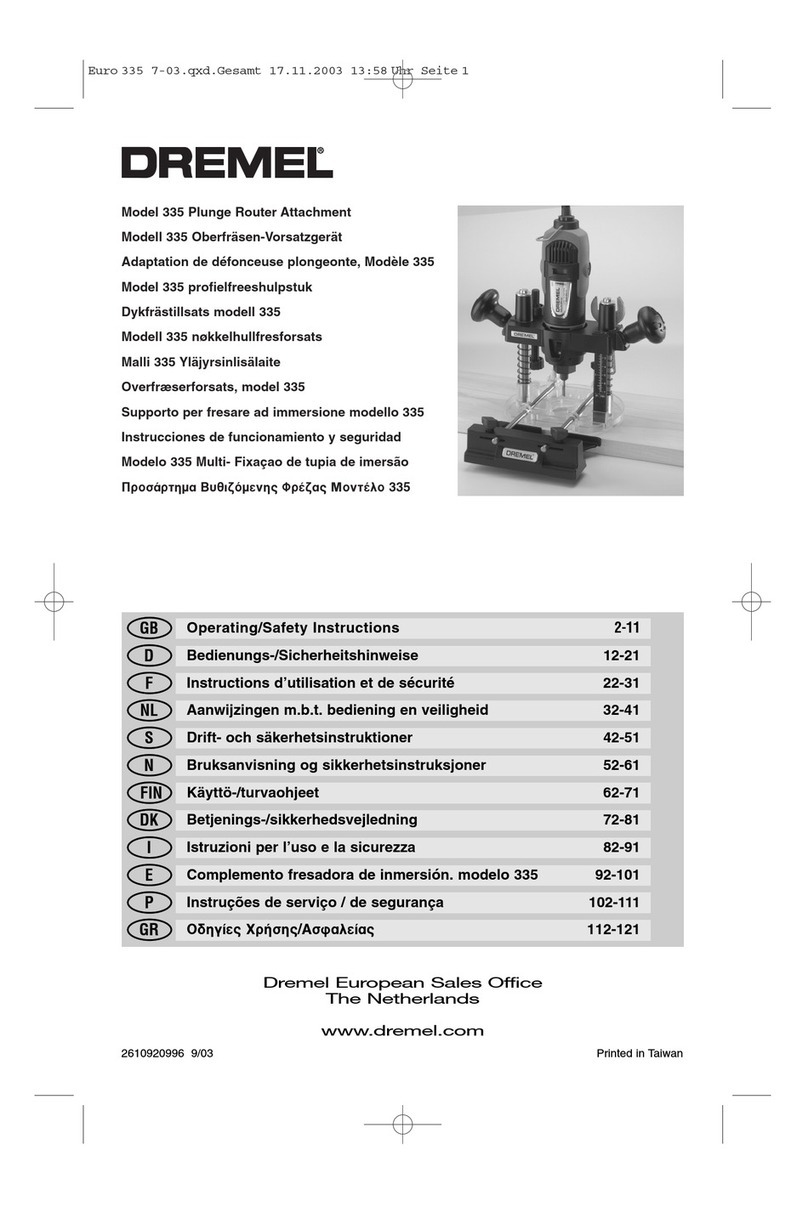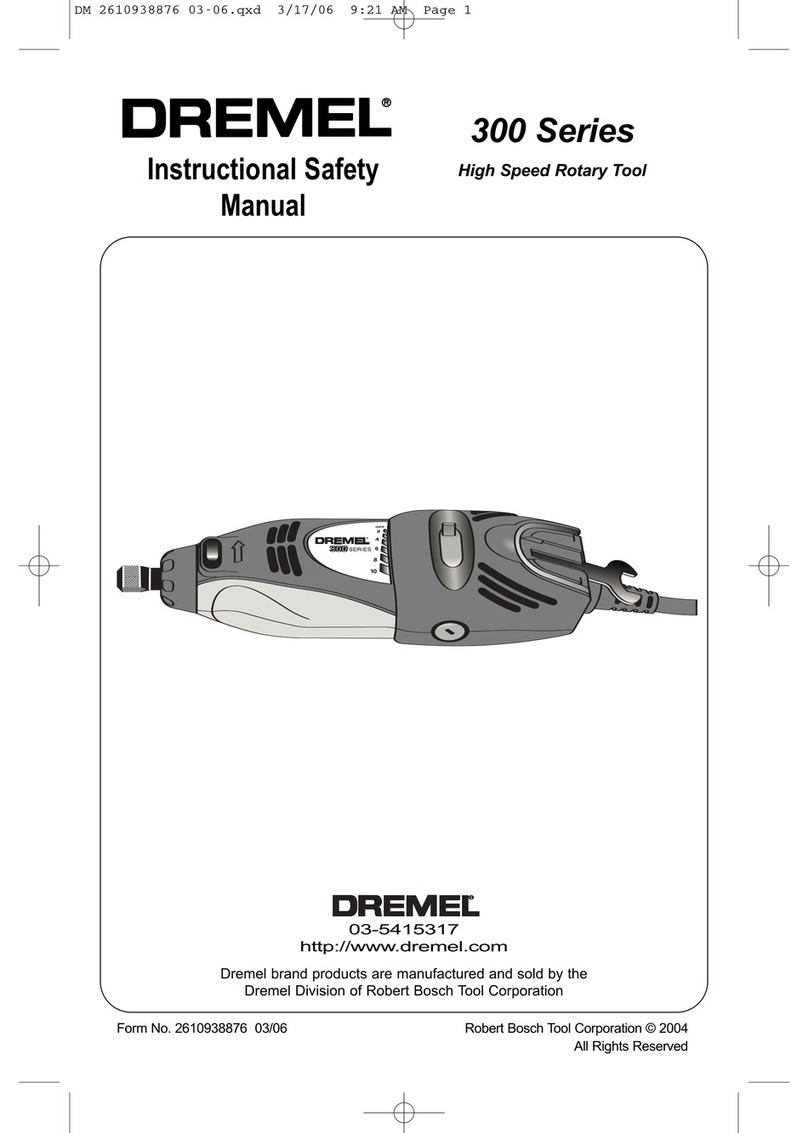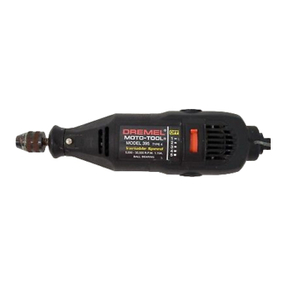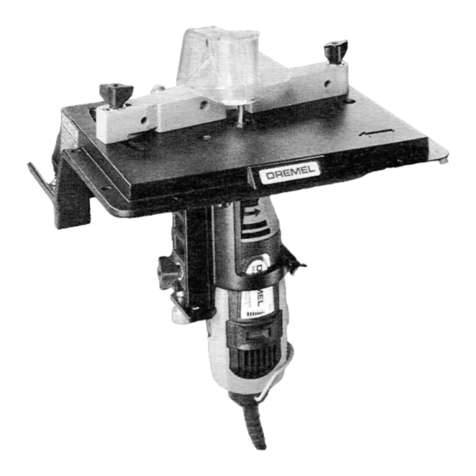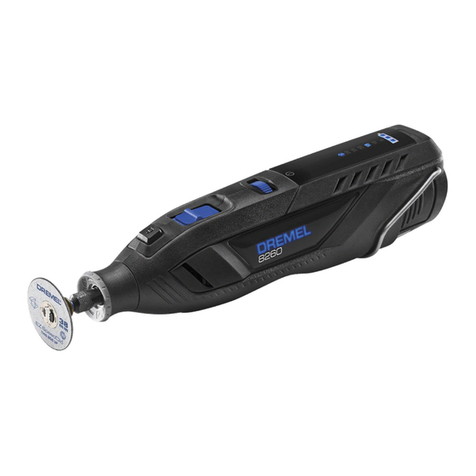4
install an undamaged accessory. After
inspecting and installing an accessory,
position yourself and bystanders away from
the plane of the rotating accessory and run the
power tool at maximum no-load speed for one
minute. Damaged accessories will normally break
apart during this test time.
Wear personal protective equipment.
Depending on application, use face shield,
safety goggles or safety glasses. As
appropriate, wear dust mask, hearing
protectors, gloves and workshop apron
capable of stopping small abrasive or
workpiece fragments. The eye protection must
be capable of stopping flying debris generated
by various operations. The dust mask or
respirator must be capable of filtrating particles
generated by your operation. Prolonged exposure
to high intensity noise may cause hearing loss.
Keep bystanders a safe distance away from
work area. Anyone entering the work area must
wear personal protective equipment. Fragments
of workpiece or of a broken accessory may fly
away and cause injury beyond immediate area of
operation.
Hold power tool by insulated gripping surfaces
only, when performing an operation where the
cutting accessory may contact hidden wiring.
Cutting accessory contacting a “live” wire may
make exposed metal parts of the power tool “live”
and could give the operator an electric shock.
Always hold the tool firmly in your hand(s)
during the start-up. The reaction torque of the
motor, as it accelerates to full speed, can cause
the tool to twist.
Use clamps to support workpiece whenever
practical. Never hold a small workpiece in one
hand and the tool in the other hand while in
use. Clamping a small workpiece allows you to
use your hand(s) to control the tool. Round
material such as dowel rods, pipes or tubing have
a tendency to roll while being cut, and may cause
the bit to bind or jump toward you.
Position the cord clear of the spinning
accessory. If you lose control, the cord may be cut
or snagged and your hand or arm may be pulled
into the spinning accessory.
Never lay the power tool down until the
accessory has come to a complete stop. The
spinning accessory may grab the surface and pull
the power tool out of your control.
After changing the bits or making any
adjustments, make sure the collet nut, chuck
or any other adjustment devices are securely
tightened. Loose adjustment devices can
unexpectedly shift, causing loss of control, loose
rotating components will be violently thrown.
Do not run the power tool while carrying it at
your side. Accidental contact with the spinning
accessory could snag your clothing, pulling the
accessory into your body.
Make sure vacuum hose is free of snags and
obstructions. Do not attach a vacuum hose to
your body. Entangled or snarled hoses can cause
a loss of balance or footing in addition to
unintentional tool operation.
Regularly clean the power tool’s air vents. The
motor’s fan will draw the dust inside the housing
and excessive accumulation of powdered metal
may cause electrical hazards.
Do not operate the power tool near flammable
materials. Sparks could ignite these materials.
Do not use accessories that require liquid
coolants. Using water or other liquid coolants
may result in electrocution or shock.
Always disconnect the vacuum hose before
making any adjustments or attaching any
accessories. You may unexpectedly cause the
tool to start leading to serious personal injury.
Avoid unintentional operation. While connecting
air supply do not hold On/Off Ring. Do not carry
the tool by On/Off Ring or connect the tool to the
wet/dry vacuum with the switch “on.”
Disconnect tool from vacuum hose when not
in use. Leaving the tool unattended with the
vacuum hose connected can result in unintentional
operation of the tool by users unfamiliar with tool.
Do not use tool with wire and bristle brushes.
Bristles or wires will be discharged at high
velocity and may cause personal injury.

